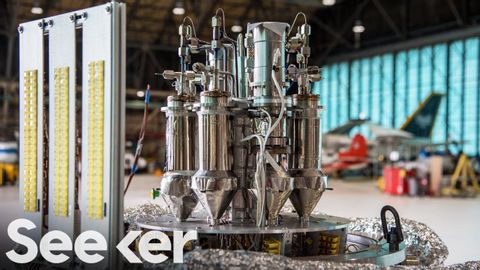
Subtitles & vocabulary
NASA's New Space Reactor Is Powered by Nuclear Fission
00
林宜悉 posted on 2020/04/07Save
Video vocabulary
demonstrate
US /ˈdɛmənˌstret/
・
UK /'demənstreɪt/
- Verb (Transitive/Intransitive)
- To display a feeling or ability openly
- To protest about something often as a group
A2TOEIC
More destination
US /ˌdɛstəˈneʃən/
・
UK /ˌdestɪˈneɪʃn/
- Noun
- The place you are traveling to
- A place regarded as worth visiting or traveling to.
B1TOEIC
More experiment
US /ɪkˈspɛrəmənt/
・
UK /ɪk'sperɪmənt/
- Noun (Countable/Uncountable)
- Test performed to assess new ideas or theories
- A course of action tentatively adopted without being sure of the eventual outcome.
- Verb (Transitive/Intransitive)
- To create and perform tests to research something
- To try something new that you haven't tried before
A2TOEIC
More develop
US /dɪˈvɛləp/
・
UK /dɪ'veləp/
- Verb (Transitive/Intransitive)
- To explain something in steps and in detail
- To create or think of something
A1TOEIC
More Use Energy
Unlock All Vocabulary
Unlock pronunciation, explanations, and filters
